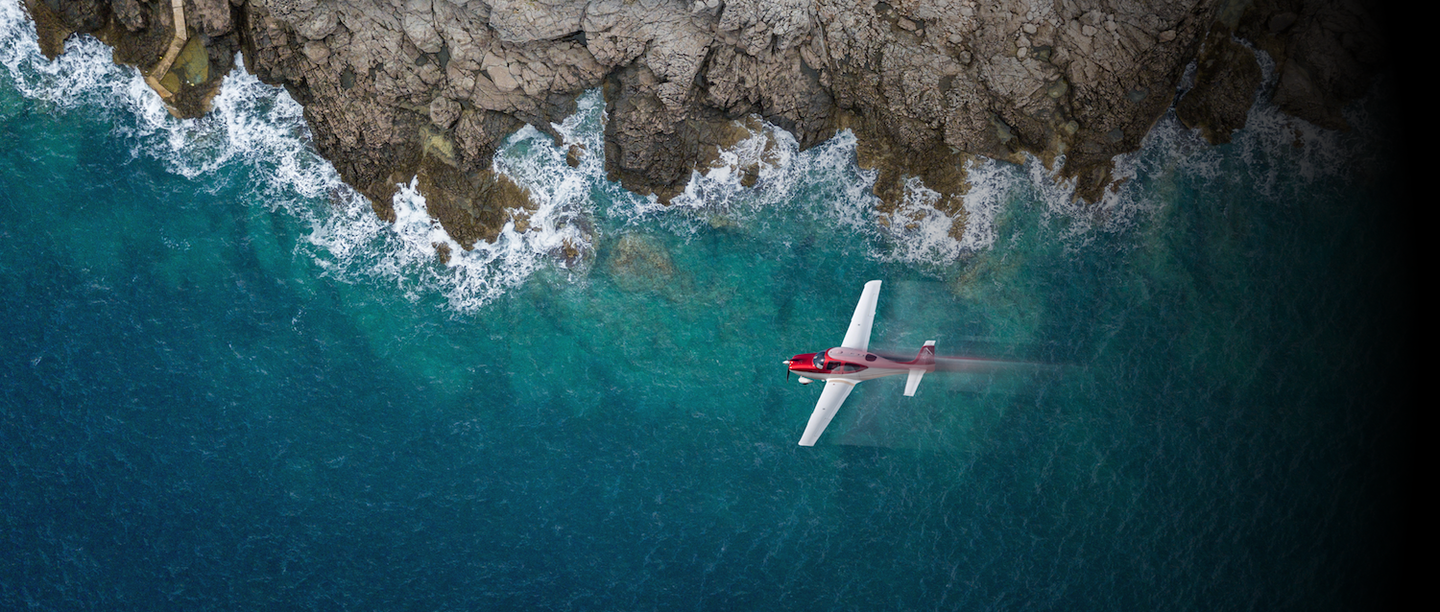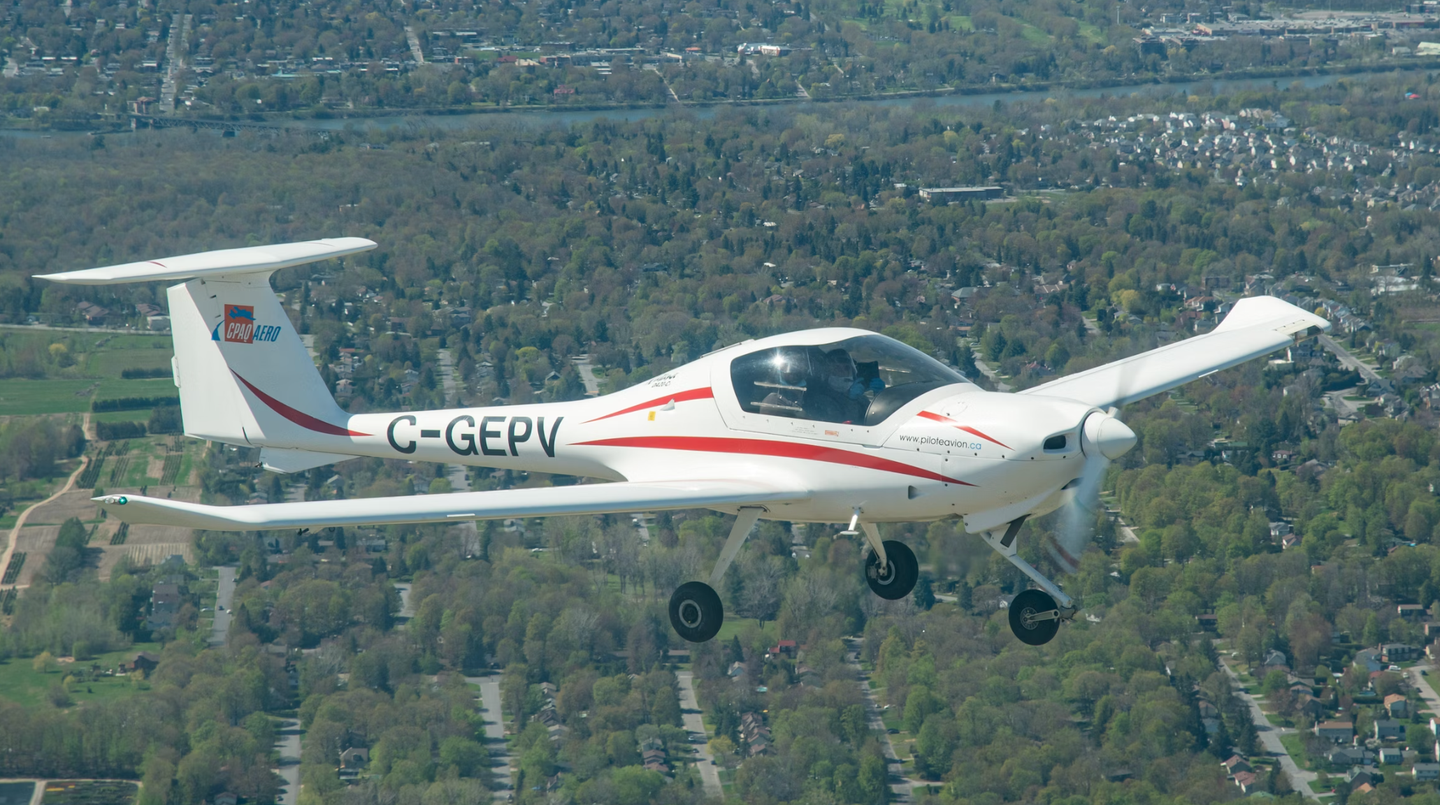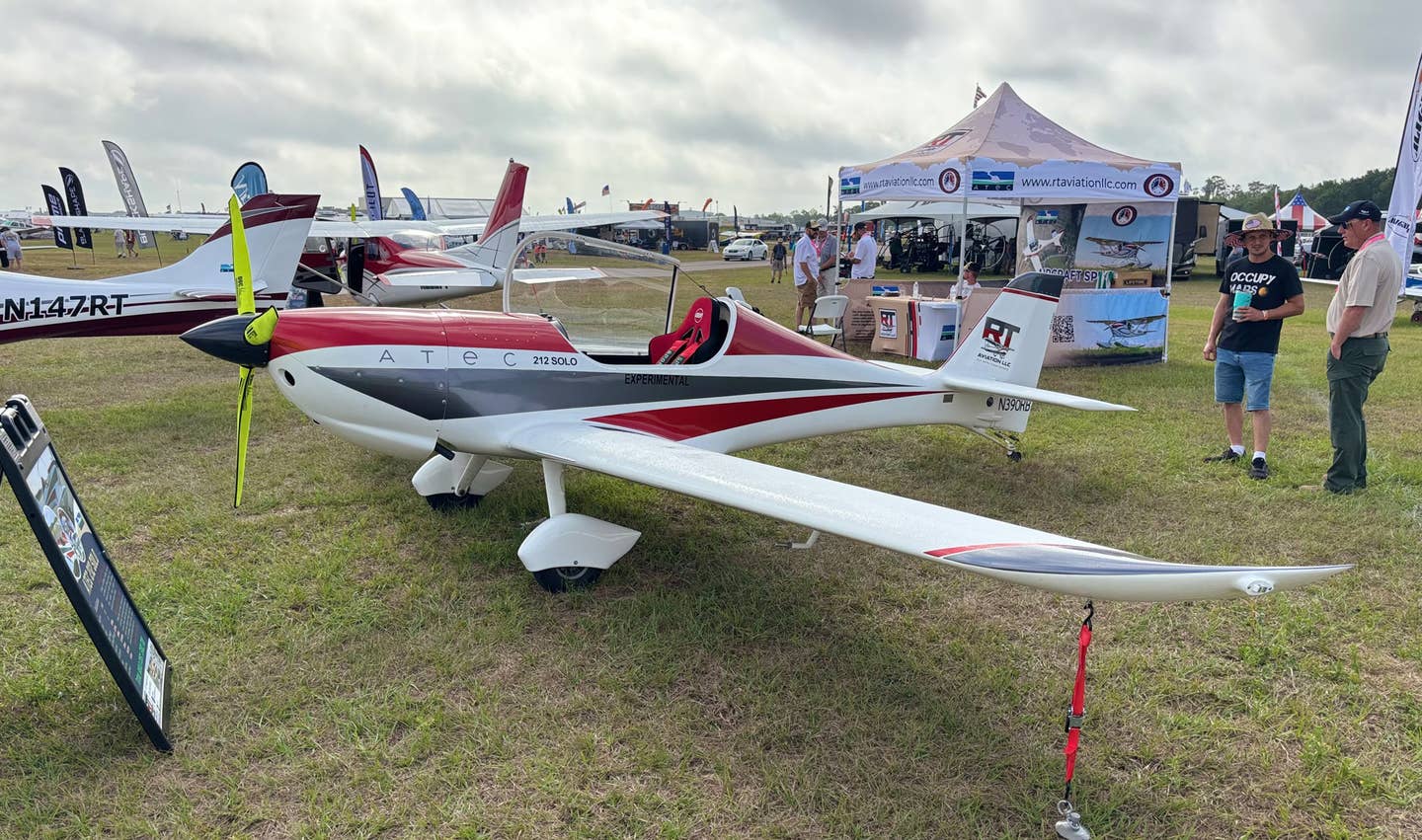How Fast A Plane Do You Need?
We all love big numbers, but how important are high cruise speeds to your missions? As it turns out, they’re critical.

When we look to buy a new plane, well, at least a plane that's new to us, we often look first and longest at how fast it is. Our love of speed, and I'm right there with you on this one, is a complicated one. Planes that go really fast are really expensive to buy and drive. What's my dream plane? Well, for going places, I'd say it's probably the Gulfstream G650. But at a cool $70 million, that continent-hopping beauty is just outside my price range, so I'd have to aim a bit lower. A more pertinent question might be, should I get a Beechcraft Bonanza or a Cessna Skylane?
You can look at a few key specs, but specifications are nothing without putting them into the context of what your needs are. What kind of missions do you fly? How far do you go? For what reasons? With how many people aboard? And what about bags? And what kinds of fields do you land on? When you ask these kinds of questions, it becomes clear that speed, while important, is just one of a range of intersecting capabilities that all go toward figuring out what plane is right for you. Is speed all that important? You bet it is!
But speed is not always well understood, and by that, I mean it's not immediately clear to many pilots (especially those who haven't flown long cross missions--we're talking 750 nm or more on a regular basis) what speed means in practical terms.
Before I go any further, I want to add that the basis for this article was one by a previous contributor to our title, Budd Davisson. It was a good read, and well researched, too, but as I began to add my two cents to it, it soon became clear that our perspectives and directions were somewhat different. So consider this article me leapfrogging off of Budd's good ideas and direction but adding my perspective.
"The big question remains: What does speed mean in real terms? What kind of advantages do those fast movers enjoy, and is it worth what you have to pay to get it?"
One thing Budd mentioned was that there were benchmarks for speed, and they're useful. Twenty-five years ago, that was 200 mph, a figure made famous by Mooney, which leveraged that magic number by calling one of its planes the "201" for being even slightly faster than that nice round 200 mph.
And for the sake of standardization, Plane & Pilot has adopted the FAA's knots-first editorial policy, which has been an industry standard for the past 35 years. And when we discuss speeds, whether mph or knots, we're referring to true airspeed (technically abbreviated as "ktas"), which is the plane's speed through the air, calculated from the calibrated airspeed and adjusting for the variables of air density and temperature. So in terms of that 200-mph gold standard, we'll think of it as 175 knots. Which is still really cooking.
THE MEANING OF SPEED
The big question remains, though. What does speed mean in real terms? What kind of advantages do those fast movers enjoy, and is it worth what you have to pay to get it?
The answers are, there are a lot of advantages, some big, some not so big, and the costs can be great. Can they be too great? Good question. Let's look at some real-world cases.
But first, it's important to get a grasp on your typical mission. If your prime travel distance is, for the sake of choosing a round number, 500 nautical miles, then one could make a compelling argument that you don't need a 175-knot cruiser to make that trip reliably and regularly. But unless you're changing zip codes or delivering a plane to a new owner, cross-country trips don't end at the first fuel stop. They don't even end at what we think of as the "destination." The actual destination is, in fact, almost always back home.
If you're making a multi-day trip, which, regardless of how fast the plane is, most long cross countries will be, then you can treat the mission as two separate trips on two separate days. Fair enough.
But if you're planning to be home again that evening, then speed is an even more critical part of the calculus. In fact, without a fast plane, a 500-nm trip out and back again with three hours on the ground at the destination isn't doable in daylight in most of the lower 48 United States during the daylight available most of the year. And super long days with a trip home late in the evening almost guarantees less-than-optimal human performance on those last legs.
But in terms of the simple math, again with that 500- mile trip, which is a usable average for most pilots, how much does speed get you? What's the difference between cruising at 138 knots, something that most Cessna 182s can do, and 174 knots, something that most mid-'60s to present-day Beech Bonanzas can pull off?
That calculation really is easy. The Bonanza saves right around 45 minutes on that trip. Is saving three-quarters of an hour worth the extra dough that sweet Beechcraft will cost you, both upfront and going forward?
The answer is maybe. Things are a lot more complicated than a cursory look at block time on one leg can tell. Real-world cross-country flying is all about taking all the parameters into account, and that means looking realistically at weather, optimum altitudes, passenger needs and the amount of daylight you have to work with---winter days are short. And when you begin factoring in considerations such as required alternates on an IFR flight plan or thunderstorm diversions, the process can get complicated, and pilots need to have a solid grasp of all of the variables that go into planning any particular trip. So, is the extra speed worth it? In the small picture, maybe not. But when you take a wider view of cross-country flying, the additional speed is priceless.
HOW FAST, THEN?
Airplanes as fast as that legendary 200 mph (which we'll think of here as 175 knots) always have the increased maintenance of retractable gear and big motors, and almost always have higher acquisition costs. Within the traditional general aviation fleet, however, there are actually only a few airplanes that can honestly claim to cruise 200 mph. These include some Cirrus SR22s, later Bonanzas, some M20-series Mooneys, some Cessna Centurions and a few others. The big question is, how much time is extra speed actually saving you, and is it worth the additional expense and potential hassle?
In the simplest and least-useful terms, we might translate that as, how much are those 40 minutes worth? If you say that flying 130 to 140 knots will do, what's in it for you? A lot. The most obvious advantage is that it costs less to get into the game to begin with. Even though the legendary Cessna Skylane is getting to be more expensive all the time, it's still cheaper than most of its much faster neighbors. An older Skylane will give you 140 knots for around 12 gph. So you'll pay less for the plane, less for fuel, less for maintenance (if you're lucky) and less for insurance.
One way of looking at speed is by using, instead of nautical miles per hour, a figure that is dollars per hour. If that sounds too complicated to be useful, we agree with you, mostly. You can estimate costs for operating any aircraft, though when it comes to maintenance, the cost variability of small planes is great. In general, the slower a plane is, the cheaper it will be to operate.
HOW MUCH DOES FAST COST, THOUGH?
The converse is true. Planes that can flirt with that 175- knot figure will cost you more upfront, more in gas and oil, and more going forward. Most of these planes are retractable gear models, though the advent of fixed-gear fast glass models, like the Cirrus SR22, have changed that calculus some.
By taking the projected costs of a plane to own and operate, known as fixed and operating costs, you can figure out how much it costs you to fly per mile. (If you wanted to get really fancy, you could make that "seat miles," which takes into account the number of people you can take along with you.) But for small planes, miles per gallon works well.
Conventional fixed-gear singles with bigger motors will net you around 12 mpg. Mooneys are champs in the fuel efficiency arena. Because they're smaller, both outside and in, and because they have lower drag because of their size and smart aerodynamic design, the less-thirsty, smaller engines up front can get you around 20 mpg, which is way better than most of the SUVs we drive.
Another way to look at speed is how much we have to pay for each additional mile per hour of speed when buying the airplane. Even when using bluebook aircraft values, which are usually low, as comparisons, it shows that airplanes like the Bonanza, which are much larger and more luxurious but nowhere nearly as efficient as the Mooneys, command higher prices. Therefore, on a dollar-per-knot basis, they're much more expensive, plus they're way down in the fuel-efficiency curve. So why do people buy Bonanzas over Mooneys? Clearly because they value that comfort and are willing to burn more gas to get it.
That doesn't answer the question about speed, though, just what you're going to pay for it. Let's say instead that you're basing your purchase on fulfilling a particular mission profile, and you'll pay whatever you need to get that plane---within reason, of course. How do you wrap your head around the speed-versus-cost equation?
I'd suggest thinking of piston singles in six groups.
⢠Planes that can't make 125 knots. These include almost every two-seater, many of which can't even hit 100 knots reliably.
⢠125-knot cruisers. Included here are planes like 180-hp Cessna Skyhawks and Piper Archers, among many others.
⢠Those that can cruise at around 140 knots. This group includes Skylanes old and new, Piper Dakotas (235-hp PA-28s), the Diamond DA-40 and the Cirrus SR20, along with many older Mooneys.
⢠Models that can reliably do 160 knots, such as the Piper PA-32 Saratoga RG or the Cessna 182 RG.
⢠Speedier ones that can deliver 175 knots, such as normally aspirated Cessna 210s, many Bonanzas, more powerful Mooneys, and a few others. It's not a long list.
⢠And then, sleek and powerful models that can get you 200 knots. These are usually turbocharged and deliver such speeds at higher altitudes, typically in the mid-teens.
By referring to this list, you should be able to get a solid idea of what kind of plane you'd want if you were regularly flying long cross-country legs. For trips of 500 nm, I'd say you want at least a tier-two level plane. For anything longer, I'd suggest an airplane that will give you 140 knots. If you're flying really long cross countries on a regular basis, aim for getting at least 160 knots, though faster is even better. Here's why.
RANGE: THE GREAT EQUALIZER, UP TO A POINT
With all this talk of speed, there's one other factor that has to be tossed into the decision equation: range. How far will a plane go without making a fuel stop? When we're talking 500-mile trips, that's not usually a factor because just about everything on our list has at least 500 nm of range. But a funny thing happens when we stretch that trip out to 1,200 miles. Suddenly, fuel capacity becomes a really big deal.
Let's say you're flying an early 2000s Cirrus SR22 that delivers its advertised 180 kt cruise speed, and let's round down to 175 to be conservative. Its spec sheet says its range is better than 1,000 nautical, but manufacturers often (almost always, in fact) list range figures based on best economy power settings, which turn a 180-knot airplane into a 140-knot one. It should go without saying that no one flies their SR22s like that unless they're trying to prove a point or flying long overwater legs. So, with 1,200 nautical miles between departure and destination points, that's just a two-leg affair---two long legs, granted, but it's undoable for 125-knot cruisers, and it's biting off a lot even for 140-knot models.
That's because, for planes with less fuel capacity/range than the Cirrus in order to make 1,200 miles safely and still have some reserve, you would have to stop twice to get gas. The actual time in the air would be around seven hours. Two fuel stops, however, are going to add 30 to 45 minutes per stop, for a total of around eight hours departure to destination.
For a trip of 1,000 miles, a 700-nm-range, 175-knot plane looks great. Adding in that fuel stop on a long mission is a killer, so planes with extra fuel capacity, like some newer SR22s or Mooneys, make long hard days a little less of both. That's worth a lot.
Still, back to that hypothetical 1,200-mile trip. Now, let's say your lowly Cessna 182 is plodding along at 140 kts but burning significantly less gas. More importantly, it's a newer model with 88-gallon tanks, which, according to the specifications, give just under 800 nm of range. So, it easily can make it with only one stop. Eight and a half hours of flying, plus 45 minutes of ground time, gives you around 9 hours and 15 minutes elapsed time. So, the SR22 gets you there about there 55 minutes faster. But are all of those things a really big deal on such a long trip?
SHORT-DAY CALCULUS
They are, especially when you're flying in the winter. Take Kansas City, for instance, since it's as mid-continental as you can get. On the shortest day of the year there, you have just over nine hours from sunrise to sunset. Add another 45 minutes or so of workable light, and you're talking 10 hours of travel time if you get started as early as possible, which isn't always easy. The faster plane gets you there with daylight to spare even on the shortest day of the year, so long as you're not flying way up north.
Now let's interject a scary word when you're flying long cross countries: headwinds. And let's use an average bad- day headwind, 25 knots. In the 175-knot airplane, you're still getting what is essentially Skylane no-wind performance. In the Skylane, you're getting sub-Skyhawk levels. In the faster plane, the trip is long but still doable within the daylight you have to work with. In the slower plane, it's not.
When it comes to multiple legs, even short ones, and wind and weather, extra speed can make a huge difference. A flight of 400 nm won't require a fuel stop for any of these planes, but the time saved flying a much faster airplane will translate into not just one faster trip but potentially three, or maybe four. Getting back home a couple of hours earlier, or maybe just getting back home at all instead of having to hotel it at the last stop, is worth a lot.
SO, WHAT'S FAST ENOUGH?
So, in the end, how fast is fast enough? Again, it depends on your typical mission. For pilots who are going to fly 750 trips or shorter, any plane that can deliver around 140 knots is a good bet. But if you increase the distance and add in the greater chance for weather and wind playing havoc with your plans, the calculus gets more complex. To decide, you've got to consider the interplay between the pilot/owner's wants and needs, as well as their financial wherewithal as it relates to the aircraft in your economic wheelhouse. When in doubt, if you can use, afford and fly it, go for the faster plane.
In the less-than-perfect world we all live in, sometimes the decision will mean buying a plane that's not quite as fast or rangy as you wish it were. If that's the case, you need to recalibrate. Take an extra day for those longest flights. Or fly commercial if you must---nobody flies their Bonanza from New York to Paris these days. The point is, even if your ride isn't as fast as you'd like, you still get to fly your plane on all but the longest cross countries.
But, again, if you can afford it, speed delivers in so many ways. PP

Subscribe to Our Newsletter
Get the latest Plane & Pilot Magazine stories delivered directly to your inbox






